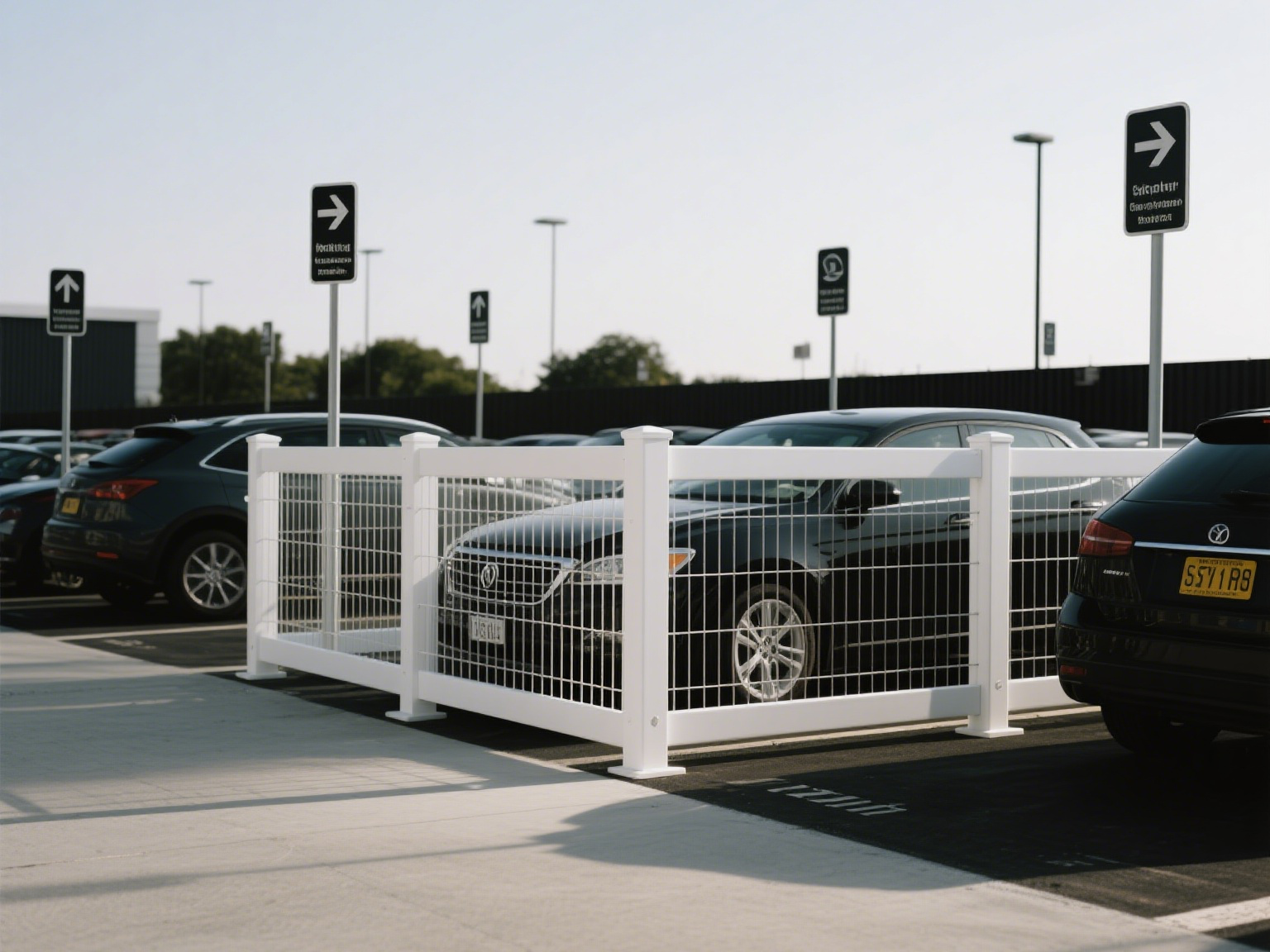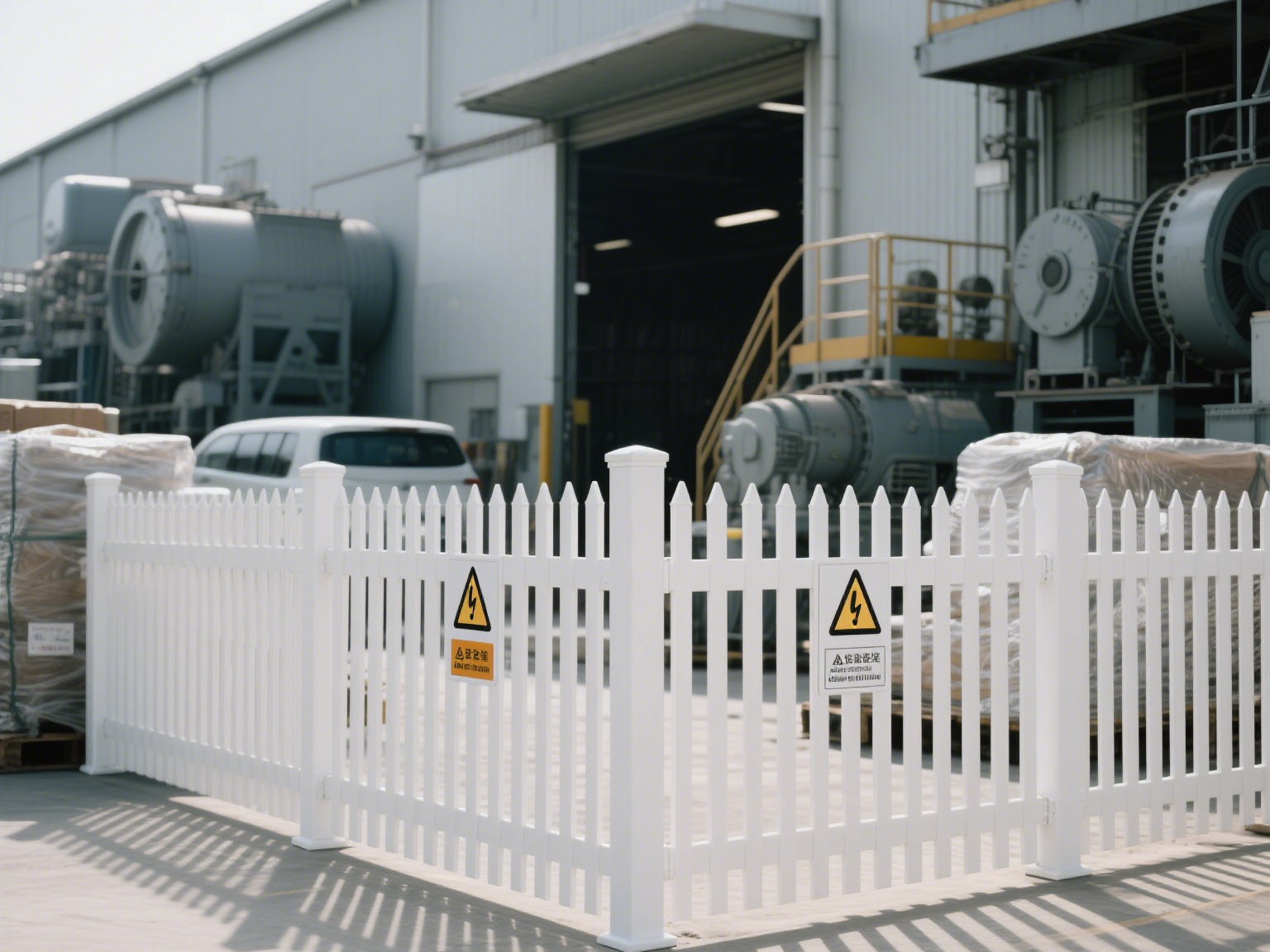PVC fences play an indispensable role in urban public spaces. They can be seen everywhere, from parks, squares, and schools to streets and communities. With their powerful functions and excellent performance, they provide strong support for the safety, order, and aesthetics of public spaces.

In recreational areas such as parks and squares, the primary functions of PVC fences are to guide pedestrian flow and demarcate zones. In the early morning, joggers run briskly along the plastic tracks clearly defined by white PVC fences. These fences skillfully separate walkways from verdant green belts, as well as activity areas from quiet resting zones, preventing people from trampling on lawns or damaging public facilities and maintaining the order of public spaces. When the afternoon sun shines down, translucent PVC fences separate the sandy areas where children play from the shimmering artificial lakes, ensuring the safety of children while allowing parents to keep an eye on them. PVC fences also have unique protective advantages. Made from high-molecular materials with excellent flexibility, they can effectively cushion the impact when tourists accidentally collide, reducing the risk of injury. Especially in dangerous areas like steep slopes and cliffs, heightened and denser PVC fences stand guard like loyal sentinels, preventing tourists, especially children, from accidentally falling into hazardous zones.
Additionally, as the “living rooms” of cities, parks and squares have high requirements for landscapes. Through advanced film-coating technology, PVC fences can display diverse textures such as wood grain and stone grain. Combined with a rich color palette, they can blend harmoniously with the surrounding environment, becoming beautiful scenic features. For example, in a flower-themed park, pink PVC fences complement the blooming flowers, creating a romantic and aesthetic atmosphere. In a sports-themed square, blue PVC fences match the sports facilities perfectly, conveying vitality and passion.

In schools and kindergartens, the safety of PVC fences is of utmost importance. Children are active and have relatively weak self-protection awareness, so they need a safe and reliable environment. PVC fences have a certain degree of flexibility and cushioning properties, reducing the risk of injury even if children accidentally bump into them. Moreover, the height and spacing of PVC fences are carefully designed to effectively prevent children from climbing over and ensure campus safety. In an experimental kindergarten, customized cartoon-shaped PVC fences with vivid animal patterns not only attract children’s attention but also subtly carry out cognitive education. Additionally, PVC fences can be customized according to the cultural characteristics of schools, integrating elements such as school emblems and mottos into the fence design, enhancing the school’s cultural atmosphere and distinctiveness.
On streets and in communities, PVC fences are mainly used for isolation and protection. On busy main roads, double-layer hollow PVC fences effectively block noise while separating motor vehicle lanes from non-motor vehicle lanes and sidewalks, regulating traffic order and reducing the occurrence of traffic accidents. In communities, intelligent induction PVC fences integrated with access control systems and surveillance cameras safeguard the safety of residents, preventing unauthorized access. They also prevent pets from wandering freely, maintaining the environmental hygiene and public order of the community. Furthermore, PVC fences can serve as carriers for community cultural promotion. Public service advertisements and community activity announcements can be posted on them, enriching residents’ cultural lives and enhancing community cohesion.

From an environmental and economic perspective, PVC fences are also highly suitable for public spaces. Public spaces cover large areas and have high demand for fences. PVC fences are made from recyclable materials, and their energy consumption during production is 40% lower than that of traditional iron fences, meeting modern environmental protection concepts. With a special anti-ultraviolet coating on their surface, they can last up to 20 years in outdoor environments, and their annual maintenance cost is less than one-fifth of that of traditional wooden fences, truly achieving low investment and high returns and contributing to the sustainable development of cities.
